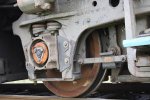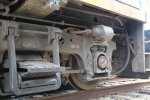On to the next thing.
I have a couple of MTH diesels, both are very nice models and so I have been looking at how to convert them to P48
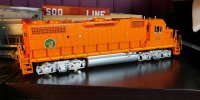
So here is the first one, a GP 38-2 in Elgin Joliet and Eastern livery, you can still see them running in this livery today.
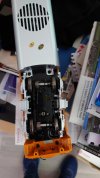
I wasn't expecting to see this when I opened it up, split axles !
One axle bearing is insulated (the black one) and the other is all metal. It does though mean that these locos have split axle pickup
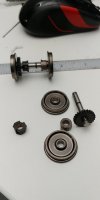
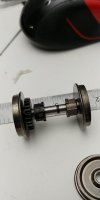
Although NWSL do a kit for MTH locos they are not drop in wheelsets and it warns you in the instructions that installation is difficult.
It also looks like these are designed for an earlier design and wouldn't work with this very recent loco (available from 2020).
So the first job was to get the wheels of the axle so that the wheels could be reprofiled and thinned.
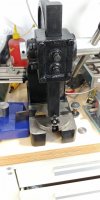
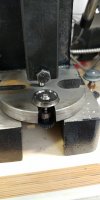
With this little monster, pushing out the axle is a nice easy job.
The wheels are 4.3 mm thick so they need thinning down to about 3mm. Right O Way sell P48 form tools so having got one of those reprofiling the wheels is a relatively straight forward job in the lathe, just the same as doing a Heljan loco to S7.
The tricky bit is getting the wheels back on the axle at the correct back to back.
So I need to make a back to back gauge, that can be used with the geared axles
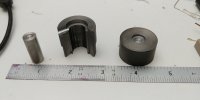
So left to right the first is the die that fits into the arbour press, the recess is so that the axle can protrude out of the wheel by about 1.3 mm that the wheel has been thinned by.
The middle one is the back to back gauge 28mm for P48 and the right hand one is the bottom wheel support again with the recess to allow the axle to protrude out of the wheel by about 1.3mm.
The back to back gauge started out as piece of cast iron bar that had already been drilled through 10mm. I added the recess for the gear at the top and turned it to 28mm in length. I then chopped it up in the mill.
Unfortunately I could not take a photo of the wheels being pressed back together as that would have needed a third hand.
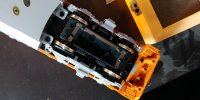
but here they are all back together, I would recommend photographing the location of the wheelsets in the bogies as you need to get the insulated and non insulated wheel bearings the correct way round and they are different on each bogie, but it all now runs.
I just need to narrow the bogie side frames.
Am I correct in thinking the model side frames are too thin and there shouldn't be too close to the wheels ?
Richard
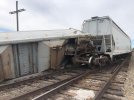
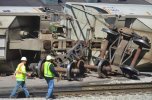
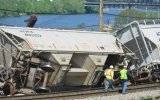

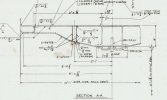
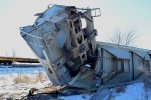
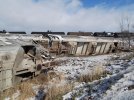
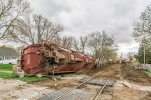
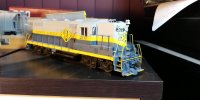
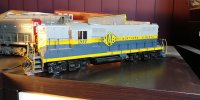
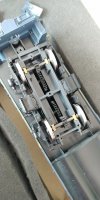
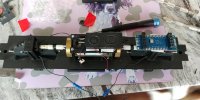
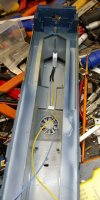
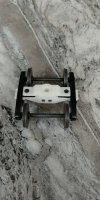
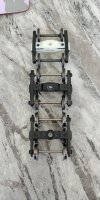
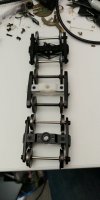
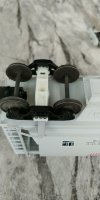








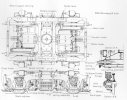
 ... perhaps a cue for a MTH GP38-2 replacement etched chassis, same for the Atlas GP60s I have.
... perhaps a cue for a MTH GP38-2 replacement etched chassis, same for the Atlas GP60s I have.

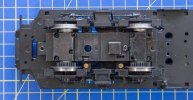
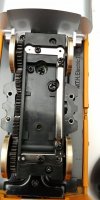
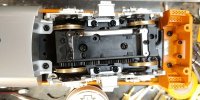
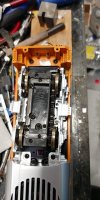
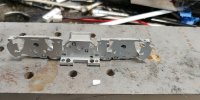
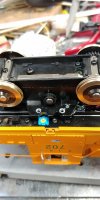
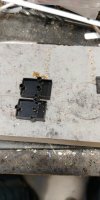
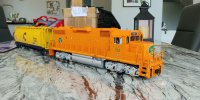
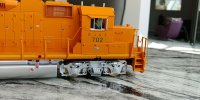
 - I generally rip out 'strange' decoders like there's no tomorrow and replace them with ESU (or Zimo). Primarily ESU though, due to their greater variety of US sound profiles, superior programming for running qualities and tweaking of sound profiles, volumes etc, etc......
- I generally rip out 'strange' decoders like there's no tomorrow and replace them with ESU (or Zimo). Primarily ESU though, due to their greater variety of US sound profiles, superior programming for running qualities and tweaking of sound profiles, volumes etc, etc......
 .
.